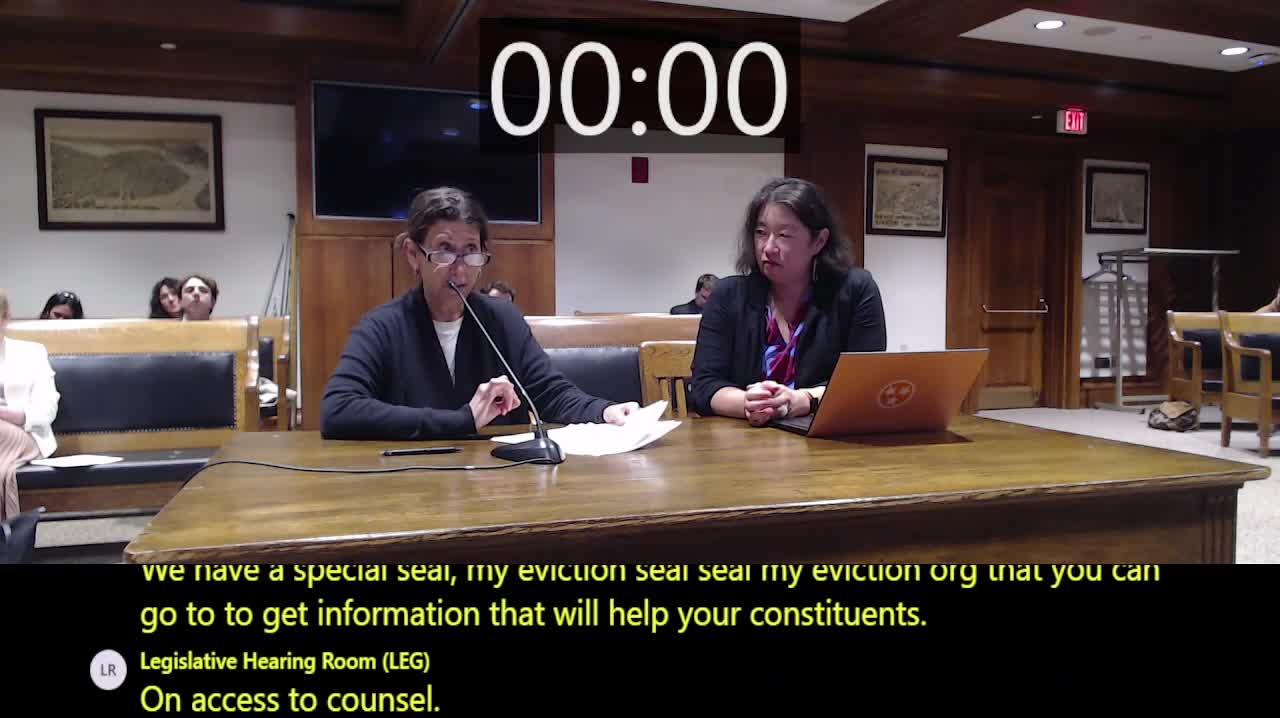Mass Law Reform reveals eviction prevention success and affordable housing loss in Massachusetts
May 29, 2025 | 2025 Legislature MA, Massachusetts
This article was created by AI summarizing key points discussed. AI makes mistakes, so for full details and context, please refer to the video of the full meeting. Please report any errors so we can fix them. Report an error »

During a recent meeting of the Joint Committee on Housing, critical discussions emerged surrounding the preservation of affordable housing in Massachusetts. Advocates highlighted the alarming loss of naturally occurring affordable housing, which constitutes 75% of the nation’s affordable housing stock. Between 2012 and 2022, Massachusetts lost 163 units of this vital resource, raising concerns about the impact on low-income residents and communities of color.
Massachusetts Law Reform, in collaboration with the Massachusetts Legal Assistance Corporation, reported promising results from their access to counsel initiative, which has successfully prevented or delayed eviction in 92% of the 460 cases opened statewide. However, the conversation quickly shifted to the need for more robust preservation strategies. The Tenant Opportunity to Purchase Act (TOPA) was mentioned as a potential solution, but further tools are necessary to combat the ongoing loss of affordable units.
One proposed measure is a local option tax credit for landlords who rent at affordable rates, introduced in a recent tax reform package. Yet, there has been little uptake, prompting questions about awareness and effectiveness among municipalities. The committee members expressed a desire for feedback on this initiative and explored additional preservation strategies.
The meeting also addressed the issue of "junk fees" imposed by landlords, which can significantly burden tenants. These fees, often hidden within lease agreements, include excessive charges for lease renewals and cascading late fees that trap tenants in a cycle of debt. Advocates called for legislative action to curb these practices, emphasizing the need for transparency and fairness in rental agreements.
As the committee continues to explore these pressing issues, the focus remains on ensuring that affordable housing is preserved and accessible to all residents in Massachusetts. The discussions signal a growing recognition of the need for comprehensive strategies to protect vulnerable populations from housing instability.
Massachusetts Law Reform, in collaboration with the Massachusetts Legal Assistance Corporation, reported promising results from their access to counsel initiative, which has successfully prevented or delayed eviction in 92% of the 460 cases opened statewide. However, the conversation quickly shifted to the need for more robust preservation strategies. The Tenant Opportunity to Purchase Act (TOPA) was mentioned as a potential solution, but further tools are necessary to combat the ongoing loss of affordable units.
One proposed measure is a local option tax credit for landlords who rent at affordable rates, introduced in a recent tax reform package. Yet, there has been little uptake, prompting questions about awareness and effectiveness among municipalities. The committee members expressed a desire for feedback on this initiative and explored additional preservation strategies.
The meeting also addressed the issue of "junk fees" imposed by landlords, which can significantly burden tenants. These fees, often hidden within lease agreements, include excessive charges for lease renewals and cascading late fees that trap tenants in a cycle of debt. Advocates called for legislative action to curb these practices, emphasizing the need for transparency and fairness in rental agreements.
As the committee continues to explore these pressing issues, the focus remains on ensuring that affordable housing is preserved and accessible to all residents in Massachusetts. The discussions signal a growing recognition of the need for comprehensive strategies to protect vulnerable populations from housing instability.
View full meeting
This article is based on a recent meeting—watch the full video and explore the complete transcript for deeper insights into the discussion.
View full meeting
